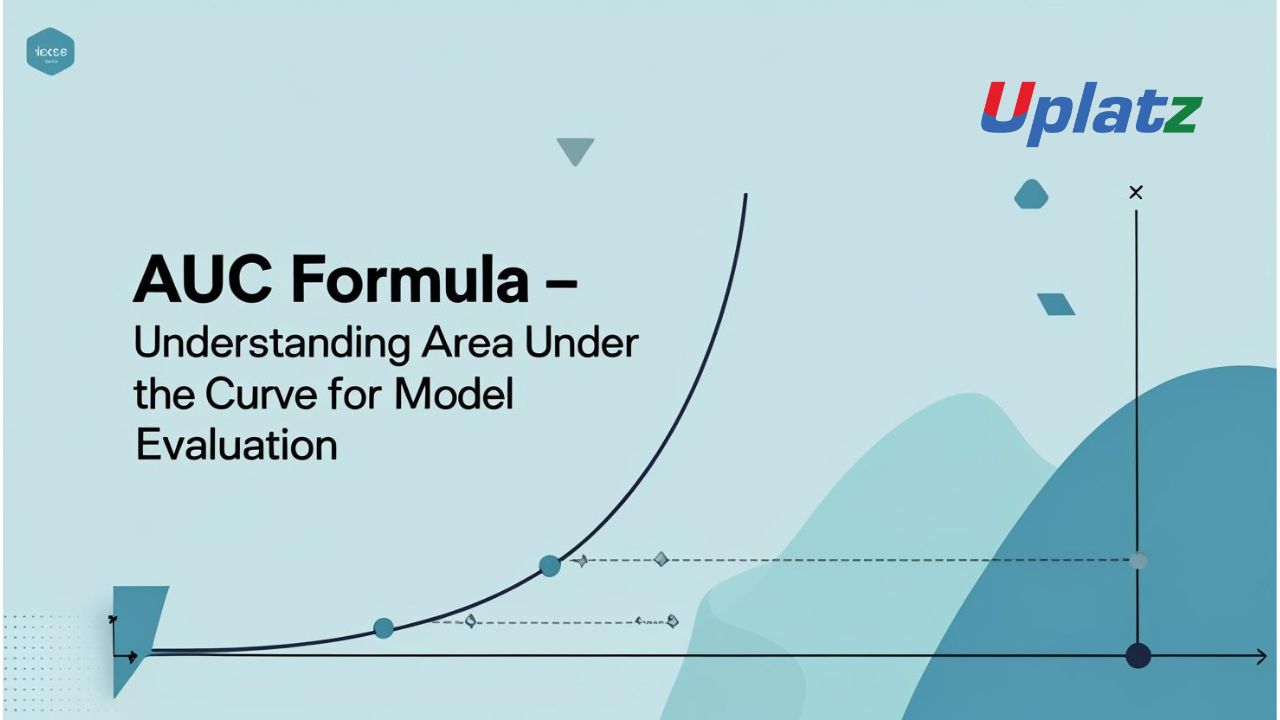 🔹 Short Description:
🔹 Short Description:
AUC (Area Under the Curve) measures how well a classification model distinguishes between classes. A higher AUC means better performance across all thresholds.
🔹 Description (Plain Text):
The AUC (Area Under the Curve) is a key metric used in classification problems to evaluate a model’s ability to distinguish between positive and negative classes. Specifically, AUC refers to the area under the ROC (Receiver Operating Characteristic) curve, which plots the True Positive Rate (TPR) against the False Positive Rate (FPR) at various threshold settings.
AUC Value Range:
- 1.0 (100%) – Perfect model (all positives and negatives separated correctly)
- 0.5 (50%) – Random guessing (no separation power)
- < 0.5 – Worse than random (model is predicting in reverse)
Why AUC Matters:
Unlike accuracy, which only evaluates model performance at a fixed threshold, AUC looks at the model’s performance across all thresholds. This makes it an excellent summary metric for binary classifiers, especially when dealing with imbalanced datasets.
What AUC Tells You:
- How well the model ranks positives above negatives
- Whether the model is robust across threshold changes
- Overall classifier strength without relying on a single cutoff
Example:
Let’s say a model is trained to detect loan defaulters.
- AUC = 0.95 means that 95% of the time, the model ranks a defaulter higher than a non-defaulter.
Real-World Applications:
- Medical diagnostics: Measuring model performance regardless of disease prevalence
- Credit scoring: Ranking risky applicants over safe ones
- Spam detection: Balancing trade-offs between false positives and false negatives
- Recommendation systems: Evaluating item ranking quality
- Marketing models: Identifying high-conversion users from the general pool
Key Insights:
- AUC evaluates ranking ability, not just classification accuracy
- It’s threshold-independent—great for comparing models without fixing decision cutoffs
- Often used in model competitions, especially in Kaggle and real-world benchmarking
- Helps in deciding how well a model separates positive and negative classes
- Higher AUC implies better overall classification performance
Limitations:
- Doesn’t provide info about specific classification thresholds
- AUC might look good even if actual precision or recall is poor
- Interpretation can be misleading if classes are highly imbalanced and not properly understood
- More abstract compared to intuitive metrics like accuracy or precision
The AUC formula offers a global view of how well your classifier performs. It’s an essential tool for model selection, especially in high-stakes or data-skewed domains.
🔹 Meta Title:
AUC Formula – Evaluate Classification Models Across All Thresholds
🔹 Meta Description:
Master the AUC (Area Under the Curve) formula to assess your model’s ability to distinguish between classes. Learn why AUC is vital for comparing classifiers and evaluating ranking performance in imbalanced datasets.
